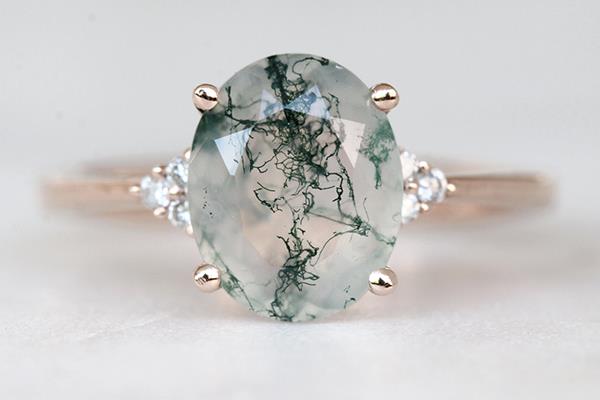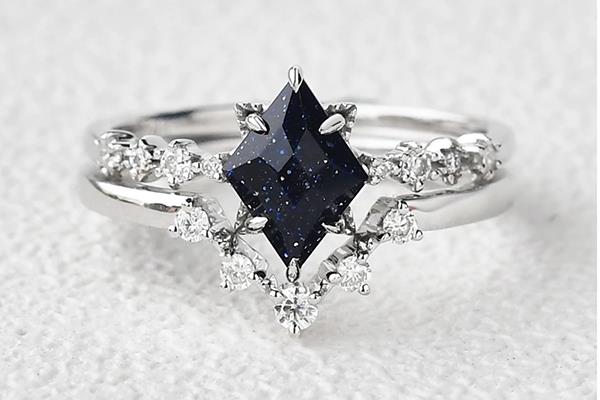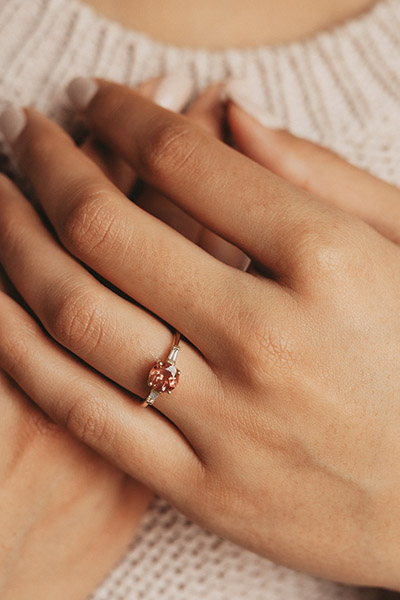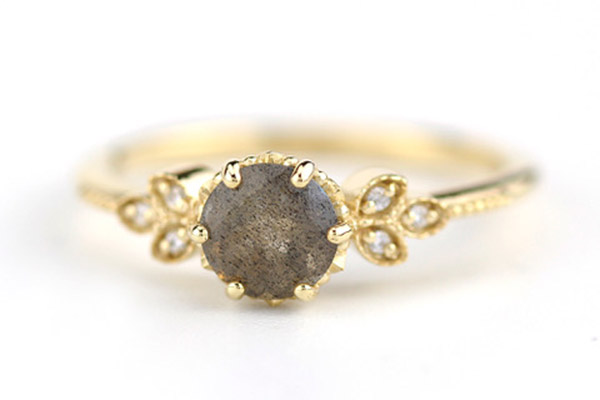7 Unique Engagement Ring Alternatives
Wondering what type of rings are out there that aren't the typical traditional diamond ring? We list 7 unique alternatives in this article.
I do, I do... I don't want a traditional ring!
Are you fed up of seeing the traditional diamond engagement rings and want your partner to get you more of a unique engagement ring? How about some of these gorgeous gemstone alternatives to diamond engagement rings?
We are seeing more of these alternatives to the typical engagement rings more and more in the media, so take a look and see if you find any that take your fancy.

1. Moonstone

This mystical gemstone is a beautiful choice, not too dissimilar to the typical diamond, it’s mainly clear in colour with different shades showing up in the light, it comes in the common moonstone hue and an intriguing rainbow variant, as well as that it can be found in green, yellow, brown, gray and almost black. Moonstone is known for its association with the moon in folklore, many believe it was created from moonbeams and it is thought to bring its wearer good fortune and feelings of love and affection, which makes it such a perfect choice for an engagement ring.
2. Opal

Opal is similar in appearance to moonstone, but comes in many different shades; red, green, blue, yellow, purple, aqua, pink and the rarest being black opal. Opal is the birthstone for the month of October and is a wonderful choice with the amount of variety out there. What’s unique about opal is it’s formed from the rain, and many believe it is formed when the water from rain seeps into the rock crevasses. It is thought to be a symbol of hope and good fortune as well, which couldn’t be more fitting for the occasion. With the plethora of colours and styles out there, you’re bound to find one that you fall in love with.
3. Quartz

This stunning mineral is the perfect choice for your engagement ring, with numerous different variants; clear quartz, white quartz, rose quartz, Citrine, Amethyst, etc. Quartz isn’t technically a gemstone, but makes up a lot of gemstones. You can even get rutilated quartz, which is a mineral with needle-like incisions, creating an intriguing effect, as well as that you can get a tourmalinated quartz ring, which is when a tourmaline grows together with a crystal quartz. If you’re looking for a popular but still mesmerising alternative to a diamond, quartz may be where it’s at. Quartz is known to enhance spiritual growth, with different types of quartz providing different properties, making it such a versatile choice for an engagement ring.
4. Moss Agate

Moss agate is known as a semi-precious gemstone, getting its name from the green cloudy specks in it which resembles moss. Moss agate is a natural, ethereal looking gemstone, and is meant to encourage tranquility and emotional balance. It is also the perfect stone for those who experience strong aggression or overly nurturing emotions, as it helps balance male and female energies when they become too extreme. This gemstone has spiritual properties, making it a great gemstone for those who are spiritual and enjoy nature.
5. Blue Sandstone

Blue sandstone, also known as galaxy blue sandstone, is a man-made gemstone made from quartz sand. It emulates the look of stars in the galaxy, how romantic?! The blue sandstone is similar in appearance to a sapphire, but with the galaxy effect it sparkles in the light, making it appear much more unique. The sparkly gem can be traced back to the 17th century, to the Miottis of Venice, a family of glassmakers who supposedly invented the technique that resulted in this mesmerising effect. It symbolises new beginnings and success, making it a wonderful way to commemorate the new beginning you are about to undertake with your engagement and the future success of your marriage.
6. Sunstone

Sunstone is a gorgeous stone, also known as Aventurine Felspar or Goldstone. It is a magical plagioclase felspar type of mineral derived from the 13th-14th century used to locate the sun in an overcast sky, meaning it reflects light. Most commonly found in shades of orange, gold, red and brown. It is meant to promote feelings of joy and abundance, perfect for those who need a little bit of light and joy in their lives. This gemstone would be perfect for those who find themselves energised by the sunnier months and drained in those dark winter months. The sunstone can be a beautiful way for your partner to give you a little bit of sunshine with their proposal and as a symbol of their love for you.
7. Labradorite

Labradorite is a beautiful felspar mineral first identified in Labrador, Canada, with an appearance that can display as iridescent. This iridescence is caused by the reflection and scattering of light. Labradorite is found in grey, white-grey, brown, pale green, blue, yellow and clear, the most rare hues being purples and fuchsias. In the metaphysical world, labradorite is know as one of the most powerful protectors, shielding wearers against the negativities of the world and the temper within ourselves. It’s also known as the stone of transformation, encouraging strength and perseverance, which can apply in your romantic life, making it a great gemstone to have as your engagement ring by imparting that positivity and perseverance within your marriage.
Obviously, a diamond is still a girl’s best friend, but if you wanted to step away from the traditional and opt for more of a unique engagement ring then hopefully you will be able to get some inspiration from these unusual and magical alternatives.
Subscribe to our newsletter
For the latest news, magazine releases, trends, inspiration, wedding planning tips and exciting launches delivered straight to your inbox!









